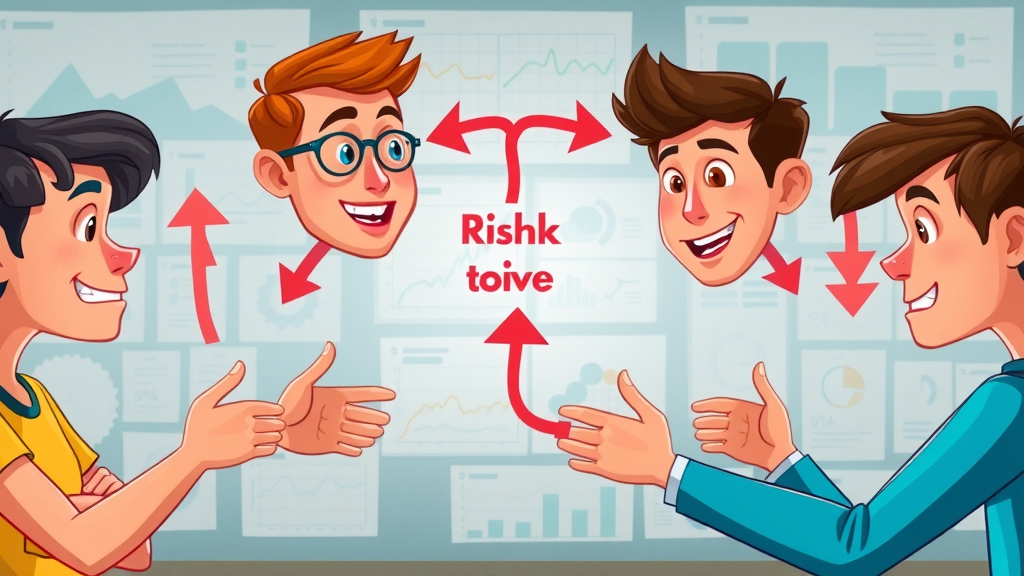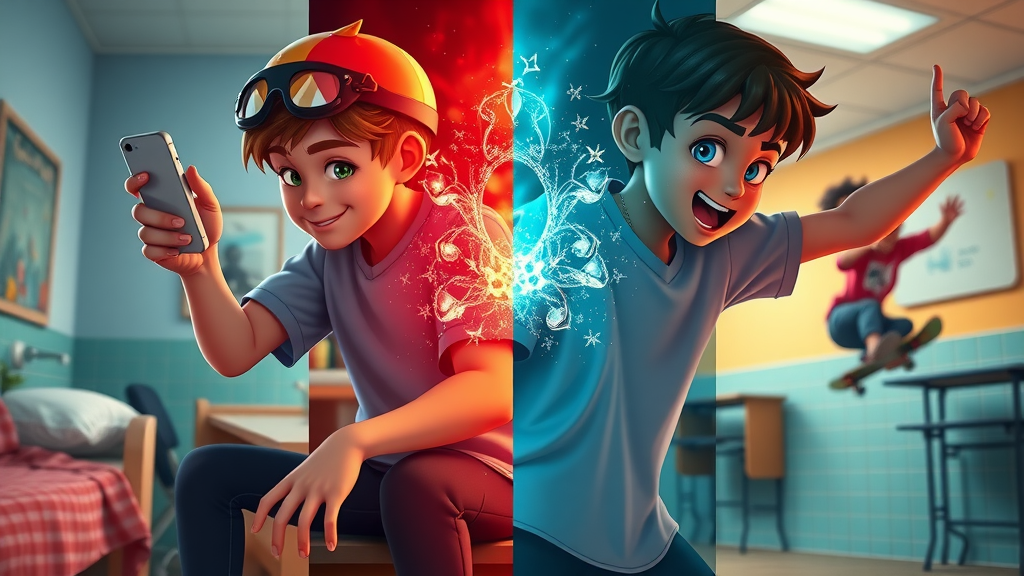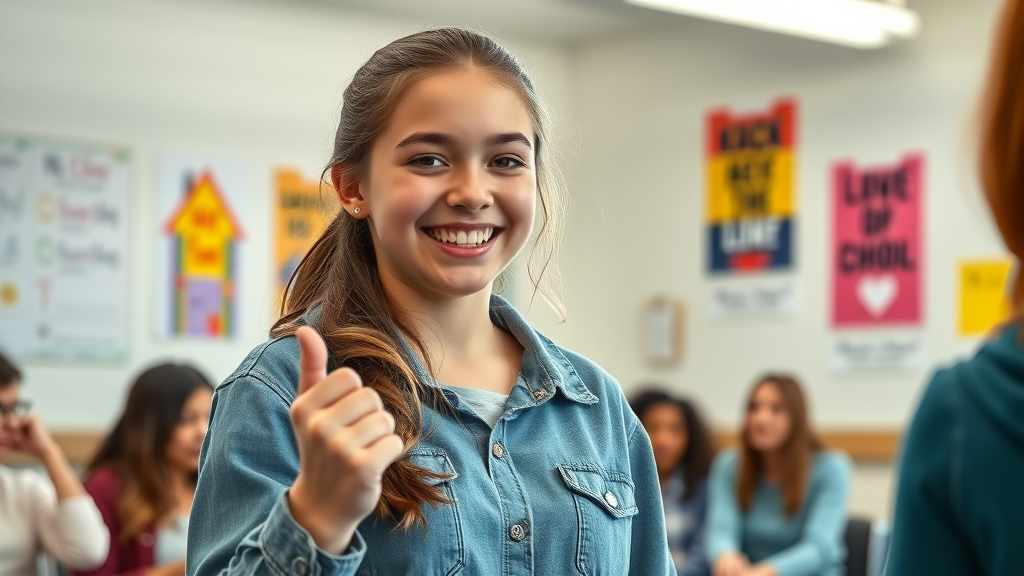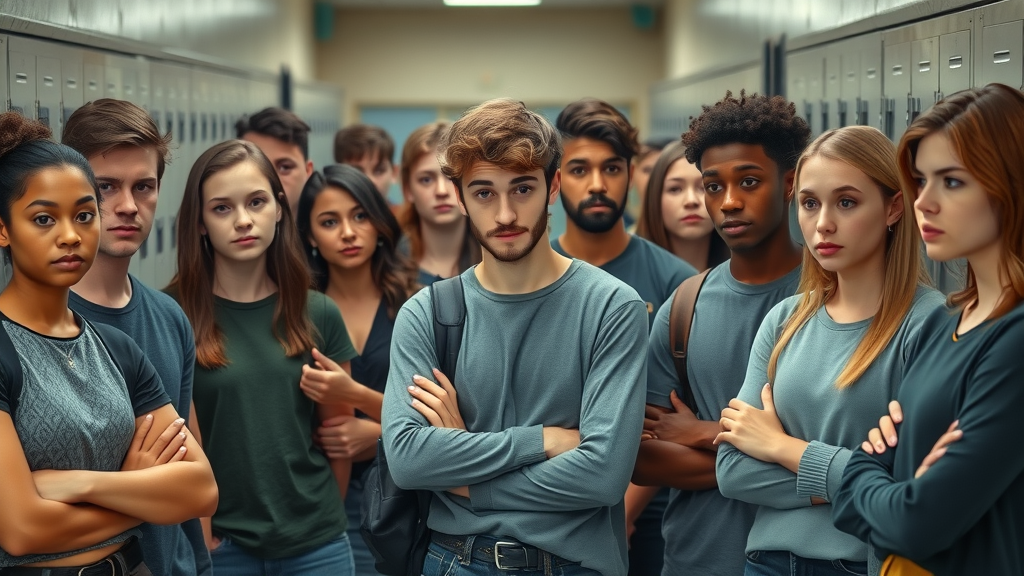Opening Hook: The Stark Reality of Peer Pressure and Risky Behavior
Peer pressure and risky behavior often go hand in hand, shaping the lives of countless teenagers—sometimes in ways that carry lasting consequences. Consider this: a recent national youth survey shockingly revealed that over 70% of teens report feeling pressured by friends to participate in risky choices at least once. This statistic isn’t just a number; it’s a reflection of daily realities faced by young people in schools and communities across the United States. The impact of peer effect and peer influence isn’t just hypothetical. For many teens, choosing between fitting in and making smart decisions can feel overwhelming and, at times, isolating. As you read on, you’ll see just how powerful these forces are—and why understanding them is key to helping adolescents navigate risk taking and make better choices.
"Over 70% of teens report feeling pressured by friends to participate in risky choices at least once." — Recent National Youth Survey

What You’ll Learn About Peer Pressure and Risky Behavior
Gain insight into how peer effect shapes adolescent risk and risk taking
Understand sensation seeking in teens and its connection to risky choices
Learn strategies and practical tips to support teens against the effect of peer influence
Understanding the Relationship Between Peer Pressure and Risky Behavior
Defining Peer Pressure and Risky Behavior in Adolescents
Peer pressure refers to the social influence exerted by group members that encourages individuals, often adolescents, to conform to certain behaviors—many of which can be risky. Risky behavior in teens includes actions like substance use, reckless driving, and breaking rules that can have negative consequences. During adolescence, the desire for acceptance and belonging from peer groups significantly increases. This heightened need creates an environment where even strong-willed teens feel compelled to partake in risky choices, sometimes simply to maintain social status. The peer effect isn’t limited to direct encouragement; indirect signals from peers, such as witnessing group members engage in risk, also influence individual decisions, especially when group members are viewed as role models or leaders.
The relationship between peer pressure and risky behavior is complex. Research shows that teens are far more likely to make risky choices in the presence of friends than when alone. For instance, large sample size studies have demonstrated that when young people observe their group members taking risks, their own propensity to take risk rises significantly. This amplification of risk taking reflects both a fear of exclusion and a genuine pull toward social acceptance. The peer influence that shapes these decisions can set patterns for future behavior, with peer influences continuing to impact health, safety, and overall well-being long after adolescence.
Peer Effect: Why Do Teens Succumb to Risk Taking?
Why are teens especially susceptible to risky behavior under peer influence? Part of the answer lies in the brain’s natural inclination toward sensation seeking at this stage of development. Adolescents crave new experiences and stimulation, making them more likely to engage in risk when encouraged by social influence. The effect of peer presence intensifies these tendencies. Rather than weighing long-term consequences, teens respond to the immediate rewards of group acceptance—which, for some, feels more important than any warning from a health prof or adult.
Studies indicate when peer effect is present, resistance to peer influence is harder—especially for those who constantly seek approval or have lower self-esteem. This can result in a wide range of risky behaviors, from experimenting with substances to participating in dangerous challenges for social media recognition. Notably, peer effect can also produce significant positive changes, such as inspiring healthier lifestyle choices if the group values those. The mixed influence on adolescent risk highlights why it’s so vital to equip teens with strategies that foster smart choices and resilience—building a network where peer influence leads to better outcomes rather than risky choices.

The Power of Peer Influence in Sensation Seeking and Risk Taking
The connection between sensation seeking and peer pressure becomes most apparent in group situations. When teens are surrounded by peers who embrace risk taking behaviors, their own boundaries and judgment are often compromised. This is particularly true if acceptance by group members is seen as a gateway to belonging or social status. Sensation seeking isn’t inherently negative—it can lead to adventures, learning, and innovation—but when amplified by negative peer effect, it may propel teens toward choices they wouldn’t make solo.
Group members play a crucial role in normalizing certain behaviors, setting subtle expectations that can shape individual decisions even without any direct verbal encouragement. The social environment of schools and youth culture often makes peer pressure and risky behavior not just tempting, but expected. The impact of peer effect also depends on family background, confidence, and access to adult guidance. By acknowledging the immense power of peer influence on sensation seeking and risk taking, parents, educators, and teens themselves can begin to develop strategies that counteract negative group dynamics and encourage positive decision-making.
The Science Behind Peer Pressure, Risk Taking, and the Teenage Brain
How Sensation Seeking Heightens Risk Taking in Teens
In adolescence, *sensation seeking* is at its peak. This developmental period is marked by a strong drive for novelty, excitement, and stimulus—natural traits that, when coupled with strong peer influence, make teens uniquely vulnerable to risky behaviors. Biological research conducted by health profs and neuroscientists reveals that the parts of the teenage brain responsible for emotional reactions and pleasure (like the limbic system) mature faster than regions controlling caution and impulse (such as the prefrontal cortex). This imbalance paves the way for quick, impulsive decisions, especially in group settings where peer effect amplifies the rewards of risky choice.
De Wit and colleagues' studies have shown adolescents and young adults are more likely to engage in risk when peers are present, demonstrating the substantial social influence on taking behaviors. Whether the risky choice is trying alcohol, speeding, or taking part in social media dares, teens are seeking acceptance and a “rush,” with the peer presence often overriding their better judgment. Understanding this dynamic is key for parents and educators aiming to curb the negative effects and help teens channel their sensation seeking into positive outlets.

Brain Development and the Effect of Peer Influence
The teenage brain is a work in progress. While teens may appear mature, the systems governing self-control and resistance to peer influence are still under construction. The dynamic between a rapidly developing limbic system and an evolving prefrontal cortex explains why teens are both more impulsive and more sensitive to peer pressure. This explains why adolescents are often described as being ‘wired’ for risk taking—especially in social environments where peer influence is strong.
Research suggests the effect of peer presence goes beyond momentary decisions. It shapes habits, social ties, and patterns of behavior that can last into adulthood. Young people with supportive and healthy social networks are less likely to engage in destructive behaviors, while those exposed to negative peer influences face a greater risk of poor choices. These neurological and psychological insights reframe peer pressure and risky behavior as matters of both environment and brain development, making clear why targeted intervention is so critical.
Adolescent Risk: The Role of Peer Effect in Risk Taking Behaviors
Peer effect can significantly predict risky behavior, with peer influence being one of the most powerful determinants of adolescent risk across cultures and backgrounds. The statistics are clear: when asked why they made a particular risky choice, teens overwhelmingly cite peer effect and desire for group acceptance as driving factors.
"Adolescents' risk taking is inextricably linked to their social environment—peer influence can push teens toward risks they’d never consider alone." — Developmental Psychologist
Beyond anecdotes, large-scale reviews and findings consistently highlight the role of peer influences in everything from taking behavior to sensation seeking and substance abuse. While it’s tempting to treat each case as isolated, patterns emerge when group dynamics, peer presence, and social rewards are considered. Understanding these patterns allows parents, teachers, and communities to better predict when risky choices are most likely, and enables them to create support systems that encourage resistance to peer influence.

Personal Perspective: Author’s Viewpoint on Peer Pressure and Risky Behavior
Why We Must Talk About Peer Effect and Risky Choices More Openly
As someone who researches and writes about adolescent risk and peer pressure, I believe open conversation about the real-life impact of peer effect is essential. Too many young people suffer in silence, convinced they’re alone in feeling pressured or afraid to voice their struggles with risky choices. Candid discussion demystifies these experiences, reduces stigma, and empowers young people to build resistance to peer influence. If we treat peer pressure and risky behavior as taboo, we lose opportunities to teach, listen, and intervene before minor missteps become life-altering consequences.
Seeing peer influence merely as a negative ignores its significant positive possibilities. Group members can inspire courage, creativity, and compassion—building resilience instead of feeding into sensation seeking gone wrong. Making space for honest dialogue, where both struggles and successes are shared, will help teens transform the peer effect from a risk to a resource.
Reflections on Personal Experience with Risk Taking Under Peer Influence
Growing up, I faced peer pressure firsthand. I vividly remember the mixture of anxiety and excitement as friends egged me on to take a risky choice I wasn’t comfortable with—skipping class or participating in a questionable dare. Even knowing the risks, the lure of belonging was hard to ignore. The fear of being left out, of not being accepted by group members, clouded my better judgment and led to choices I’d later regret. But it also taught me empathy. I realized that resistance to peer influence isn’t just about “saying no”—it’s about feeling secure enough in your self-worth to stand apart, even when that’s unpopular.
These personal experiences fuel my belief in proactive education and open communication. If I’d better understood the forces driving my decisions, or seen role models modeling positive sensation seeking rather than reckless risk taking, the outcomes might have been different. This is why I advocate for building support systems that empower teens to make intentional choices—navigating the powerful currents of peer effect with skill and confidence.
The Unseen Dangers: Case Studies of Risky Choices Led by Peer Pressure
Case studies bring the dangers of peer pressure and risky behavior to life. For example, in social media challenges, a single “like” can escalate into widespread risk taking as group members one-up each other for digital praise. Substance use frequently starts with a friend offering a drink or vape—rarely from solitary exploration. Academic cheating often emerges from collective rationalization, where a group agrees to bend the rules for a shared grade. Participation in dangerous stunts, whether for laughs or adrenaline, is often spurred by a desire to impress peers.
Each of these cases highlights the need for awareness about the subtle (and not-so-subtle) ways peer effect shapes our choices. Teens need relatable stories, realistic examples, and safe forums to explore how group dynamics can nudge them into behaviors with lasting consequences.

How Does Peer Pressure Influence Risky Behaviour? (PAA)
Answer: Peer pressure and risky behavior are deeply connected, as peer effect increases a teen’s likelihood of making risky choices in pursuit of acceptance and sensation seeking.
Peer pressure influences risky behaviour by amplifying the power of group norms. When young people observe their group members engaging in risk taking, their individual resistance to peer influence decreases. The need for acceptance and validation within the peer group often outweighs personal judgment, especially for teens with high levels of sensation seeking. This is partly why the presence of peers is a consistent predictor of risky choice, shown in table-based research comparing solo and social decision making. Adolescents often downplay risks and focus on short-term rewards, with the peer effect masking potential negative outcomes. The social influence of group members, both direct and subtle, is a critical driver of adolescent risk taking.

How Does Peer Pressure Affect Behavior? (PAA)
Answer: Peer pressure can dramatically affect behavior by influencing decision-making processes, leading to increased risk taking and engagement in adolescent risk activities.
The influence of peers extends beyond initial risk taking—it shapes overall behavior patterns. Peer effect means young people often adjust their attitudes and actions to align with group members. This can result in positive behaviors when the group values health, generosity, or academic achievement, but it frequently leads to increased risky behaviors such as substance abuse or reckless driving. Peer presence also impacts the way risk is perceived, making dangerous activities appear more acceptable or even glamorous. This environment of social influence shifts internal boundaries, often with little thought given to long-term consequences. As such, the effect of peer on adolescent behavior underscores the important role of supportive networks and open discussion.
How to Fight Off Peer Pressure for Risky Behaviour? (PAA)
Answer: Encourage open dialogues, teach refusal skills, model healthy choices, and foster environments where peer influence is positive rather than negative.
Building resistance to peer influence starts with honest communication between teens, parents, and educators. Teens need practical tools and assertive scripts to help them refuse risky behavior without alienating their peers. Modeling positive risk taking (like creative challenges or healthy competitions) demonstrates that sensation seeking can be fulfilled safely. Creating spaces for positive peer interaction, whether through team sports, clubs, or community projects, provides teens with alternative sources of belonging and validation. The more confident teens feel about their self-worth, the less likely they are to succumb to negative peer effect. Ongoing adult support ensures that if a risky choice is made, it becomes a learning opportunity rather than a pattern.
What Are the 4 Risky Behaviors? (PAA)
Answer: The four core risky behaviors in adolescence include substance use, unsafe driving, unprotected sex, and delinquent activities; all are heightened by peer pressure and sensation seeking.
Each of these behaviors is particularly sensitive to the effect of peer. Substance abuse often begins in social contexts, with group members providing both access and encouragement. Unsafe or reckless driving, such as speeding, is far more common when teens are with peers, where thrill seeking and impressing others are strong motivators. Unprotected sex frequently occurs in situations driven by peer influences and sensation seeking, with immediate rewards prioritized over long-term health. Finally, delinquent activities such as vandalism or theft are rarely solo undertakings, as the perceived safety and excitement of the group lowers individual inhibitions. Independence, education, and support are crucial for countering these social influences—and encouraging healthy forms of sensation seeking instead.

Real-Life Examples: Peer Influence and Consequences of Risk Taking
Case 1: Risky choices in social media challenges
Case 2: Substance use due to peer effect
Case 3: Academic cheating under peer pressure
Case 4: Participation in dangerous stunts for sensation seeking
These real-life cases illustrate how the peer effect magnifies the potential for risky behavior. Social media challenges, for example, often spread rapidly among young people, leading group members to attempt stunts far outside normal boundaries just for online acclaim. Substance use typically starts as a means of fitting in, escalating to repeated risky choices as group norms shift. Academic cheating has become normalized in some circles, with pressure to succeed at all costs overriding ethical considerations. Finally, stunts and dares conducted in groups allow for shared excitement—a classic example of sensation seeking where the perceived risk is diminished by the presence of friends. Each story exemplifies how adolescent risk is not just individual, but a collective phenomenon shaped by the dynamics of peer influence.

Strategies to Reduce the Impact of Peer Pressure and Risky Behavior
Building Self-Esteem and Resilience in Teens
Practical methods for boosting confidence
Ways to counteract negative peer influence
Encouraging positive sensation seeking
Strengthening a teen’s sense of self-worth is one of the most effective ways to reduce the impact of peer pressure and risky behavior. Confidence-building activities—such as setting achievable goals, celebrating successes, and encouraging creative pursuits—help teens internalize their value outside group acceptance. Teaching critical thinking skills fosters resistance to peer influence, allowing young people to pause and evaluate the risks before acting. Positive sensation seeking, like taking on leadership roles or participating in athletics, channels the urge for excitement into healthy outlets.
Social support is equally essential. Teens who feel seen and valued by adults or mentors are less likely to rely on group members for validation, making them more inclined to resist negative peer effect. Programs that highlight social influence, teach refusal skills, and offer access to role models help counteract the social pressures that drive risk taking. In short, resilience can be taught—and every step taken to build self-esteem safegaurds teens from succumbing to group-driven risk.

Parent and Educator Roles in Curbing the Effect of Peer Influence
Open communication about risky behavior
Setting examples of healthy risk taking
Monitoring and guiding social engagements
Parents and educators have a pivotal responsibility in helping teens navigate peer pressure and risky behavior. Open dialogue—in which adults listen nonjudgmentally and share their own experiences—creates a foundation of trust. These conversations should normalize setbacks and frame risky choices as opportunities for growth rather than just failures. Setting examples of positive risk taking, such as learning new skills, engaging in creative pursuits, or volunteering, demonstrates to teens that it’s possible to seek excitement responsibly.
Guidance should also include monitoring social situations, knowing who group members are, and offering supervised opportunities for healthy peer interaction. Educators can build curriculum around social influence and resistance to peer influence, arming students with practical tools and language to navigate real-life scenarios. Ultimately, the combined efforts of supportive adults are vital for shielding young people from negative group dynamics and helping them develop confidence in their own decision-making.
Informative animated explainer video illustrating peer pressure scenarios and healthy coping strategies for teens.
Peer Effect and Prevention: Community Approaches to Risk Taking
School-Based Programs Addressing Peer Influence and Sensation Seeking
Effective school-based programs are essential for addressing sensation seeking and minimizing risky choices shaped by peer effect. Many schools now offer peer leadership clubs, social-emotional learning classes, and mentorship opportunities that empower students to make positive decisions. Programs that highlight the science of the adolescent brain and provide role-plays for resisting negative peer influence create a safer environment for all. The greatest impact comes when these initiatives are consistent, engaging, and rooted in real-life scenarios—making the lessons memorable and actionable.
Such initiatives reduce the likelihood of risky behavior by teaching skills in self-management, critical thinking, and assertiveness. When young people see their peers embracing healthy risk taking (like sports, music, or entrepreneurship), it reframes the group narrative and shifts the peer influence from negative to positive. These community efforts are a potent antidote to the social pressures exacerbated by sensation seeking during adolescence.
Community Resources to Help Teens Avoid Risky Behavior
Communities must work alongside schools and families to provide comprehensive support. Youth centers, after-school programs, and helplines offer safe spaces for teens to discuss their experiences with peer pressure and risky behavior. Access to positive adult mentors, mental health resources, and extracurricular activities can make all the difference in building resilience to negative peer effect. Communities that prioritize youth engagement and positive peer modeling lay the groundwork for healthier, safer adolescence—proving that everyone plays a role in preventing risky choices.
Collective action matters. When a teen knows that supportive adults and peers are watching out for them, the influence of negative peer pressures is greatly reduced. It’s these wider safety nets that ensure no young person has to choose between acceptance and well-being.
Tables: Comparing Types of Peer Influence and Risk
Type of Peer Pressure |
Example Behavior |
Short-term Effect |
Long-term Effect |
|---|---|---|---|
Direct (Explicit) |
Friends urging participation in a dare |
Immediate thrill, group acceptance |
Reinforced group norms, higher risk tolerance |
Indirect (Implicit) |
Witnessing peers use substances |
Curiosity, temptation, self-doubt |
Gradual normalization of risky choices |
Positive |
Peers praise academic achievement |
Increased motivation, pride |
Adoption of healthy risk taking |
Negative |
Mocking non-participation in stunts |
Social anxiety, pressured compliance |
Potential for harmful risk taking, self-resentment |
Quotes: Insights from Experts on Peer Effect and Risk Taking
"Empowering teens to say no starts with teaching them self-worth." — Youth Counselor
Lists: Quick Tips for Teens to Resist Peer Pressure
Recognize manipulative tactics: Trust your instincts if something feels wrong.
Practice assertive communication: Learn polite, confident ways to say no.
Stay connected to supportive adults: Seek advice from those you trust.
Engage in positive activities: Join clubs, sports, or groups that share your values.
Key Takeaways: Navigating Peer Pressure and Risky Behavior
Peer pressure and risky behavior are interlinked—awareness and skills can reduce negative outcomes
Positive peer influence can encourage healthy risk taking
Community and family support are crucial
FAQs: Peer Pressure, Risk Taking, and Teen Health
What age is most vulnerable to peer pressure and risky behavior?
Most teens experience peak vulnerability to peer pressure and risky behavior between the ages of 12 and 17. During this period, the need for social acceptance is strongest and brain development favors sensation seeking. Younger and older teens may respond differently, but early- to mid-adolescence tends to be the most sensitive age for peer effect and risk taking.
Does technology make peer influence stronger?
Absolutely. Technology and social media amplify peer influence by exposing teens to more group norms and trends at a faster rate. Viral challenges, group chats, and platforms for sharing experiences mean that the effect of peer often reaches far beyond face-to-face interaction—making both positive and negative peer effect more pervasive.
Are there any positive outcomes from peer effect?
Yes! Peer effect can foster academic motivation, encourage healthy lifestyle habits, and inspire teens to pursue leadership or creative endeavors. When group norms are constructive, peer influence can have a significant positive impact on self-esteem, confidence, and decision making.
Practical video role-play showing real-world scenarios where teens practice resisting negative peer effect using assertive communication and supportive strategies.
Conclusion: Shaping a Positive Future by Addressing Peer Pressure and Risky Behavior
Awareness, open dialogue, and skill building can reshape peer effect, empowering teens to transform risky behavior into opportunities for growth and healthy self-expression.
Understanding the dynamics of peer pressure and its influence on risky behaviors is crucial for guiding teens toward healthier choices. The article “Peer Pressure and Risky Behavior: Helping Teens Make Better Choices” delves into this topic, offering insights and strategies for parents and educators.
For a comprehensive exploration of how peer pressure affects adolescent behavior, the American Academy of Child and Adolescent Psychiatry provides valuable information in their article titled “Peer Pressure.” This resource discusses the various forms of peer influence and offers practical advice for parents on supporting their children. (aacap.org)
Additionally, the Raising Children Network offers an insightful piece titled “Peer pressure & peer influence: teens,” which examines both the positive and negative aspects of peer influence and provides strategies to help teens navigate these social dynamics. (raisingchildren.net.au)
If you’re serious about understanding and mitigating the effects of peer pressure on teens, these resources will provide you with the knowledge and tools necessary to support adolescents in making informed and safe decisions.
 Add Row
Add Row  Add
Add 





Write A Comment